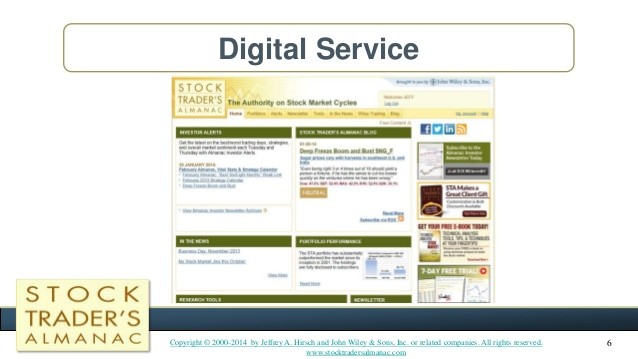Jeff Hirsch Of The Stock Trader s Almanac Explains Stock Market Cycles Outlook On SPY
Post on: 16 Март, 2015 No Comment

For nearly 50 years, the Hirsch Organization, a stock market research firm, has studied the stock market’s ebbs and flows. It’s discovered that the market moves in cycles and patterns according to the seasons, presidential terms, wars and other major events.
Jeffrey Hirsch explains how to analyze these patterns and trade accordingly in his latest book, The Little Book of Stock Market Cycles, released this month by Wiley.
Hirsch is chief market strategist at Magnet AE Fund LP, editor-in-chief of the Stock Trader’s Almanac newsletter and president of the Hirsch Organization, a stock-market research firm.
IBD: What are the stock market cycles and what stage are we in?
Hirsch: There are many stock market cycles, ranging from the long-term cycles that last a decade or more, to multiyear cycles, to seasonal and short-term patterns down to daily cycles.
In my book, I highlight the most pervasive and discernible market cycles that continue to influence the market to this day. The long- term cycle of secular bull and bear markets has been driven by the cycle of war and peace, financial crisis and inflation.
The three secular bears of the 20th century surrounded the three major wars: World War I, World War II and Vietnam. Following these wars were periods of peace; prosperity accompanied secular bull market moves that lasted for many years and drove the market higher by 500% or more.
After the financial crises of the early 20th century and WWI, the Dow rose 504% from 1921 to 1929. After the Depression and WWII, the Dow rose 523% from 1949 to 1966. In the 1970s, stagflation and the Vietnam War gave way to the greatest boom in a generation, and the Dow skyrocketed 1,447% from 1982 to 2000.
Once crisis dissipates and the troops come home, inflation kicks in and holds the market in its range for several more years.
As inflation tapers off and government begins to function properly again, getting out of the way of the private sector where appropriate and aiding effectively, the market takes off again on a steady diet of new enabling and a cultural-paradigm-shifting technology.
In the 1920s, it was the automobile. In the 1950s and 1960s it was TV, space exploration, home appliances and the military industrial complex.
In the 1980s and 1990s, the information revolution built the microprocessor, the Internet, and cellular communications, fueling the longest boom in modern times.
Within these secular bull and bear markets, the stock market is influenced by the four-year presidential cycle and seasonal market patterns. The election of a U.S. president every four years has created a pattern of weakness the first two years, no losses in the third year since 1939 and modest gains in election years on average.














